This broccoli tabbouleh features finely chopped, lightly cooked broccoli in place of the traditional tomatoes. Much like a classic tabbouleh, it’s a fresh, flavorful grain salad that makes for a versatile side dish or the base of a nutritious meal.
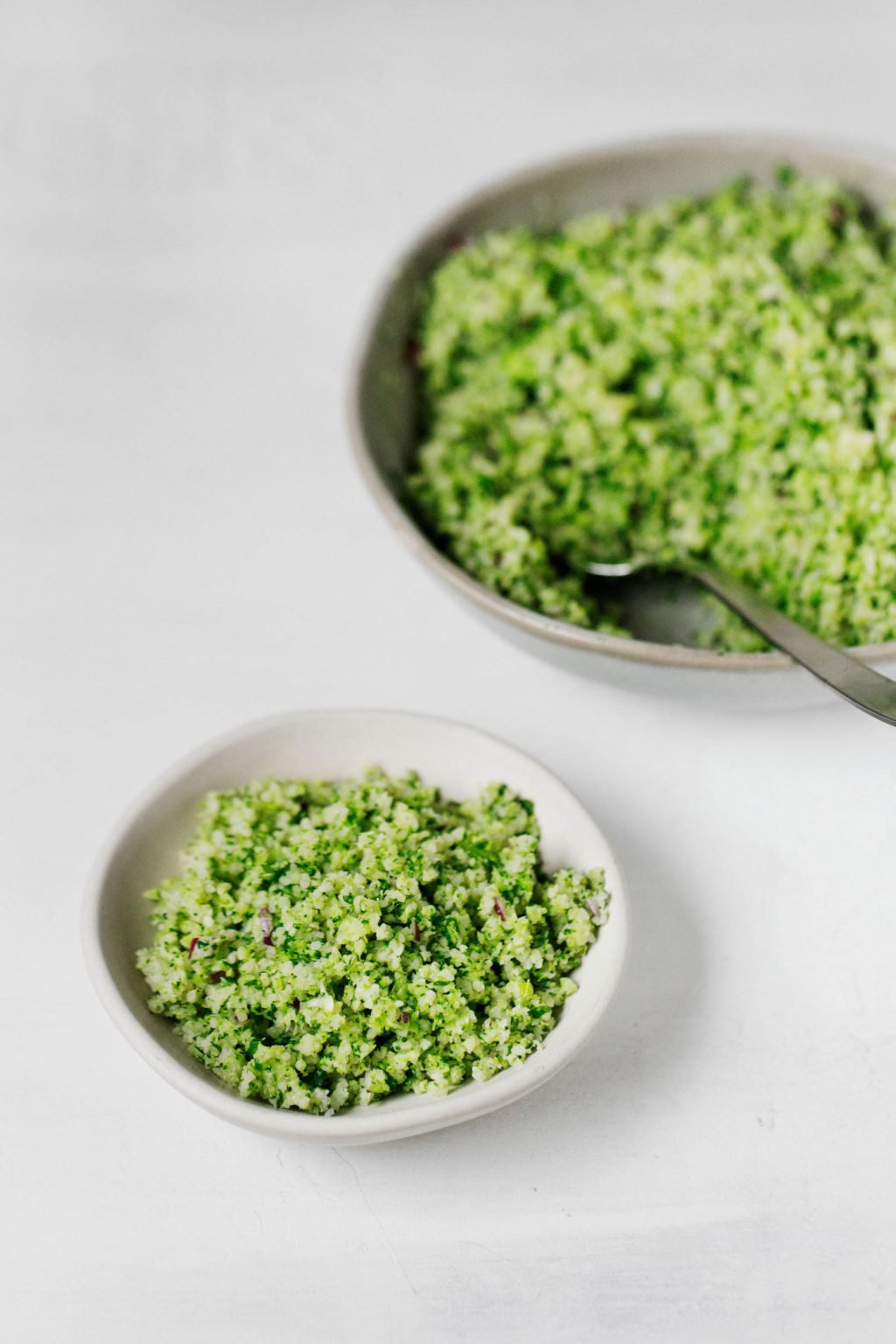
The weather has been cooling down steadily and consistently in New York. With the exception of a strangely balmy, 60 degree day on Monday, it’s clear that early winter has arrived.
Of course I’m enjoying all of my favorite cozy, hearty comfort food soups, stews, casseroles, and pasta dishes as a result. But I also find, as the weather gets cold each year, that I crave a lot of bright, green, herbaceous food as well.
By January, I’m usually chopping fresh parsley into everything and making a lot of winter salads. Perhaps it’s my way of welcoming freshness into the gray landscape of the winter months. It’s a time of year that I love, but it can be wearisome. Bursts of color and crunch on my plate remind me that there’s sunshine out there to counteract the cold.
This broccoli tabbouleh is a non-traditional spin on traditional tabbouleh, which is one of my favorite things to eat during the summer months. In place of juicy, chopped tomatoes, it features finely chopped broccoli.
The result is a wintery tabbouleh salad. It’s different from the traditional recipe, yet still very much related to it. The broccoli tabbouleh is bursting with the bright taste of parsley and lemon. Yet the earthy, nutty flavor of bulgur also shines through.
Plus, the salad is a convenient way to eat more broccoli, if you or a loved one needs any encouragement. I don’t need encouragement to love broccoli any more than I do, but I always need new serving suggestions.
What is tabbouleh?
Tabbouleh is a Levantine salad made with chopped parsley, cooked bulgur wheat, tomatoes, onion, and mint. There are variations: sometimes cucumber or lettuce is added, and the ratio of parsley to bulgur can vary. I’ve seen recipes that call for red onion instead of white, or which include scallions.
Tabbouleh is usually served as part of a mezze. This broccoli tabbouleh can be served this way—as an appetizer or snack—or it could be a side dish with your favorite plant protein. You can also add to the tabbouleh in order to transform it into a lunch or dinner. I’ve included some ideas for that below!
What is bulgur wheat?
Bulgur wheat is the grain in traditional tabbouleh. Bulgur is parboiled, dried, and cracked wheat kernels.
There are a few major varieties of bulgur. Fine bulgur, which is also sold as bulgur #1, is often the type of bulgur used in tabbouleh salads. It cooks quickly, and I’ve seen recipes that simply call for soaking it, rather than boiling.
It can be a little tricky to find fine bulgur. Most of the bulgur I’ve seen in stores or online is medium bulgur (#2). This is the variety that I use in the broccoli tabbouleh. It takes about 10-15 minutes to cook (usually 12, for me). It’s available in a lot of natural and mainstream grocers, as well as online.
There are red and white varieties of bulgur, and I like to use both of them.
Bulgur wheat is rich in dietary fiber. It’s also a source of iron, and it’s relatively high in protein for a whole grain.
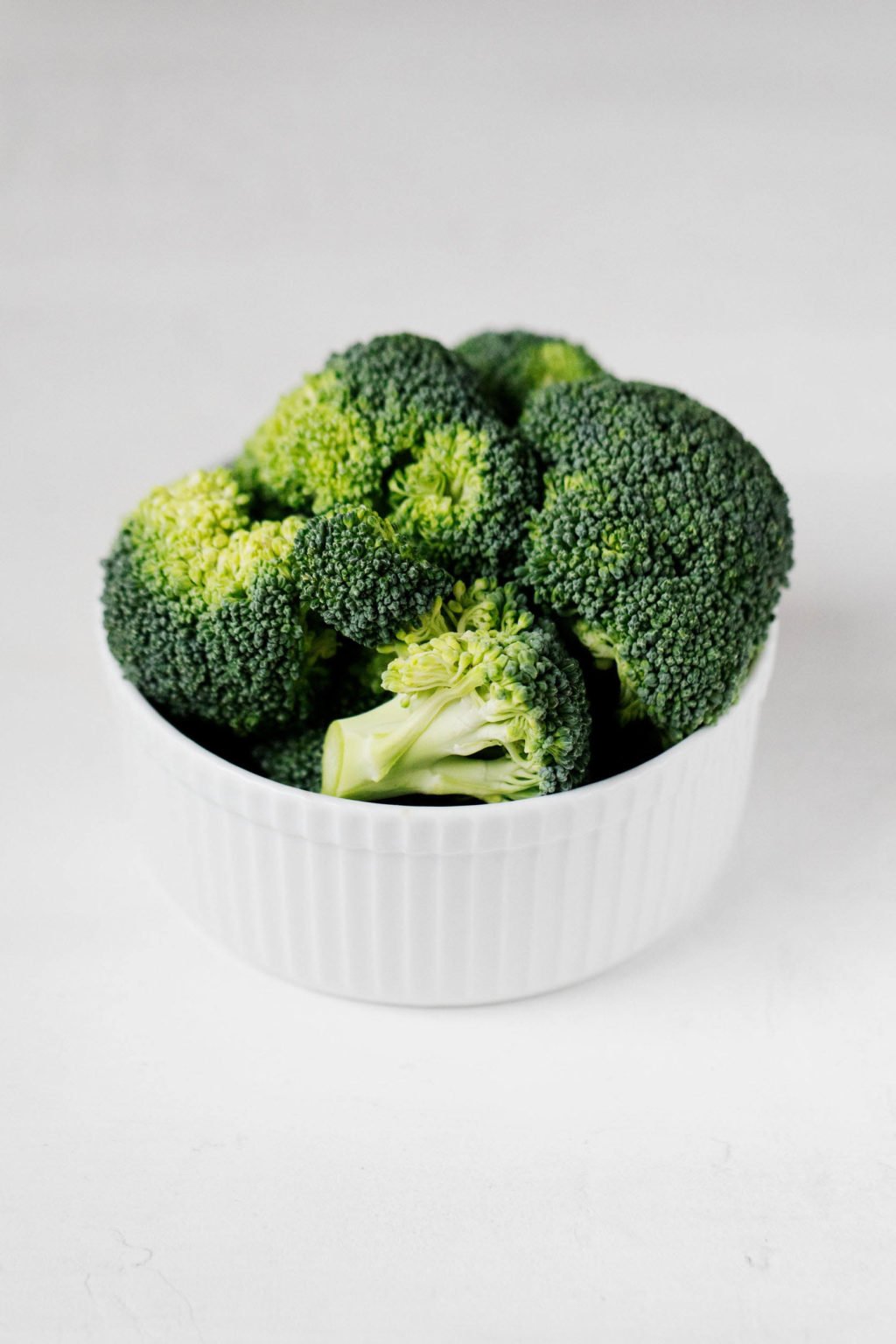
How to make broccoli tabbouleh
Cook your bulgur wheat
The first step in making the broccoli tabbouleh is to cook your bulgur. This is pretty straightforward, though I recommend double checking the packaging of your bulgur to be sure that it includes no special instructions.
For most medium bulgur I’ve used, I add 2 parts water and 1 part bulgur to a pot. I bring it to a boil, cover, reduce the heat to low, and simmer for ~12 minutes, or until the water has been absorbed by the grain. I remove the bulgur from heat, fluff it with a fork, recover, and allow it to sit while I prepare the rest of the broccoli tabbouleh recipe.
You can prepare your bulgur wheat up to three days in advance of throwing the salad together.
Prepare your broccoli
Next, you’ll prepare the broccoli for the tabbouleh.
When I first tested the recipe, I thought about using raw, finely chopped broccoli. As soon as I tried that, I was reminded that raw broccoli salads aren’t my favorite. I miss the slight sweetness and tenderness of steamed broccoli (which is my default vegetable side dish).
So, I decided to try lightly cooking the broccoli instead. Rather than florets and pieces, I finely chopped my broccoli before adding it to a nonstick pan. I steam cooked the tiny pieces of broccoli for a couple minutes, uncovered, and then allowed them to cook for another minute or so—just until there was no water left in the pan.
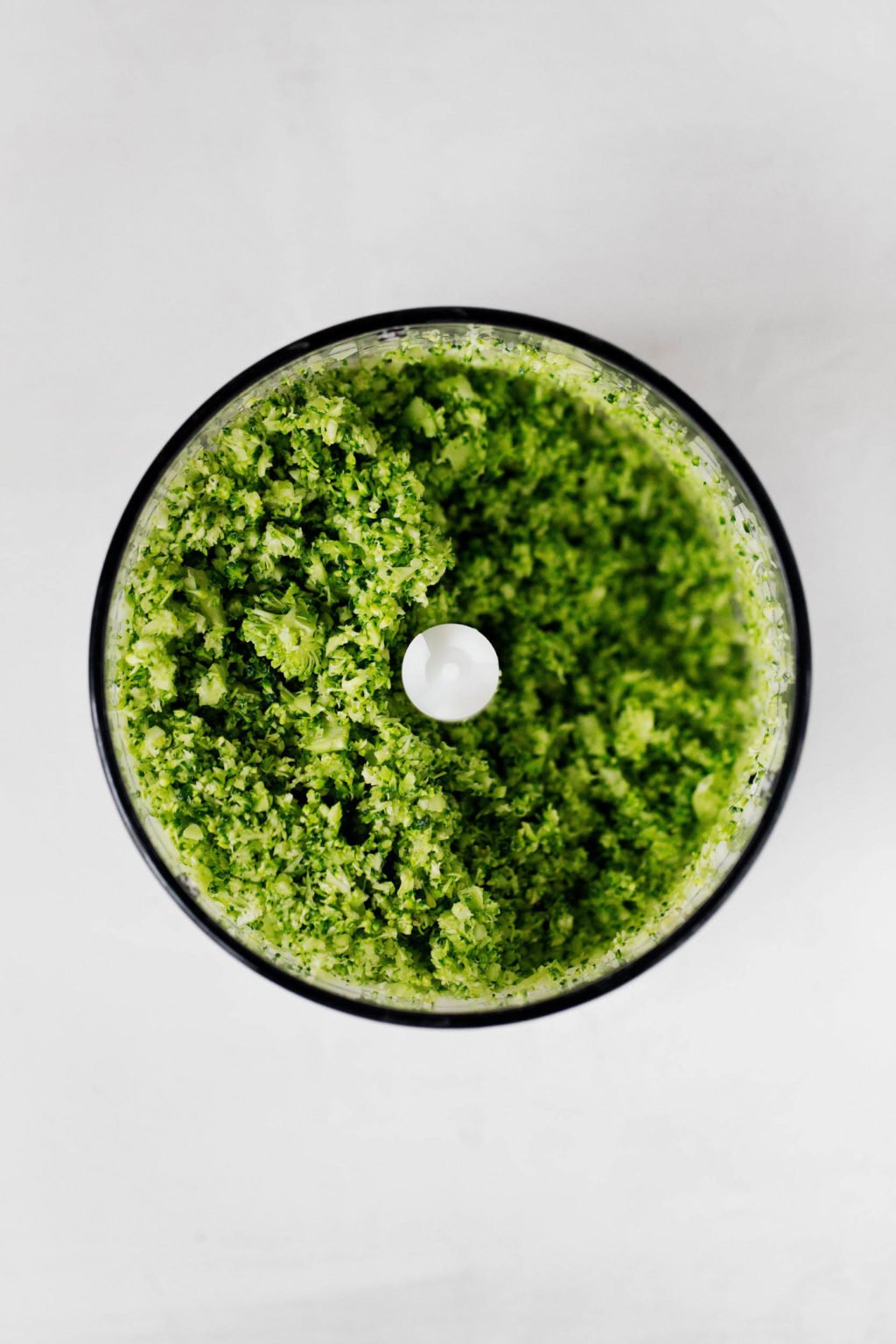
It worked so well! In the end, I had chopped broccoli that was bright green and sweet, yet still crunchy. The broccoli retains a hint of its natural bitterness, too. It’s the perfect in-between of steamed and raw for the tabbouleh salad.
If chopping up a head of broccoli feels like more work than you’re up for, the good news is that broccoli rice (frozen and shelf-stable) is now a thing that exists. In place of the 12 ounces of broccoli called for in the recipe, you can use 10-12 ounces of frozen broccoli rice instead.
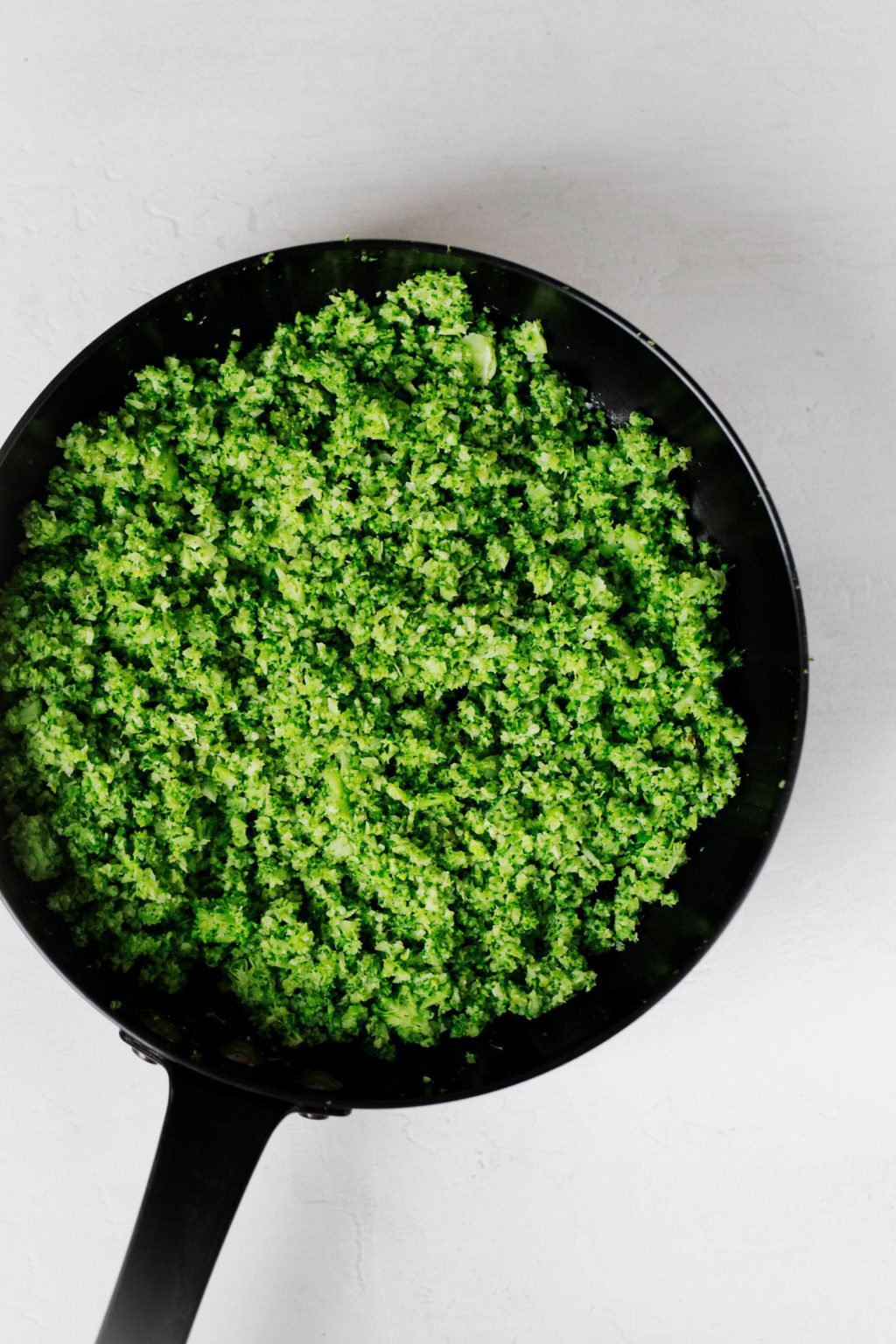
Chop your herbs
After you chop and cook the broccoli, you’ll wipe down your food processor and use it to chop your herbs.
Tabbouleh generally calls for mint and parsley. You can use that combination here, or if you’re having a hard time finding fresh mint in the winter, you can use all parsley. The salad is refreshing in either case.
If you choose to use frozen broccoli rice, rather than preparing your broccoli from scratch, and you don’t want to dirty the food processor, you can finely chop herbs by hand. I’d personally always rather use a processor for vegetable and herb preparation—a little more cleanup, but a lot less work.
Mix the tabbouleh
At this point, you need only mix your cooked grain, vegetables, and herbs together with seasoning for the broccoli tabbouleh.
The seasonings are simple here: garlic, lemon, olive oil, salt. You could certainly give the tabbouleh added flavor with the addition of cumin, coriander, or another spice. Additionally, you can increase the garlic to taste (I’m usually pretty conservative with it).
And that’s it. Your fresh, zippy little grain salad is ready to eat. If you like, you can top it with pomegranate arils for a festive touch. Not necessary, but bright and cheery for December!
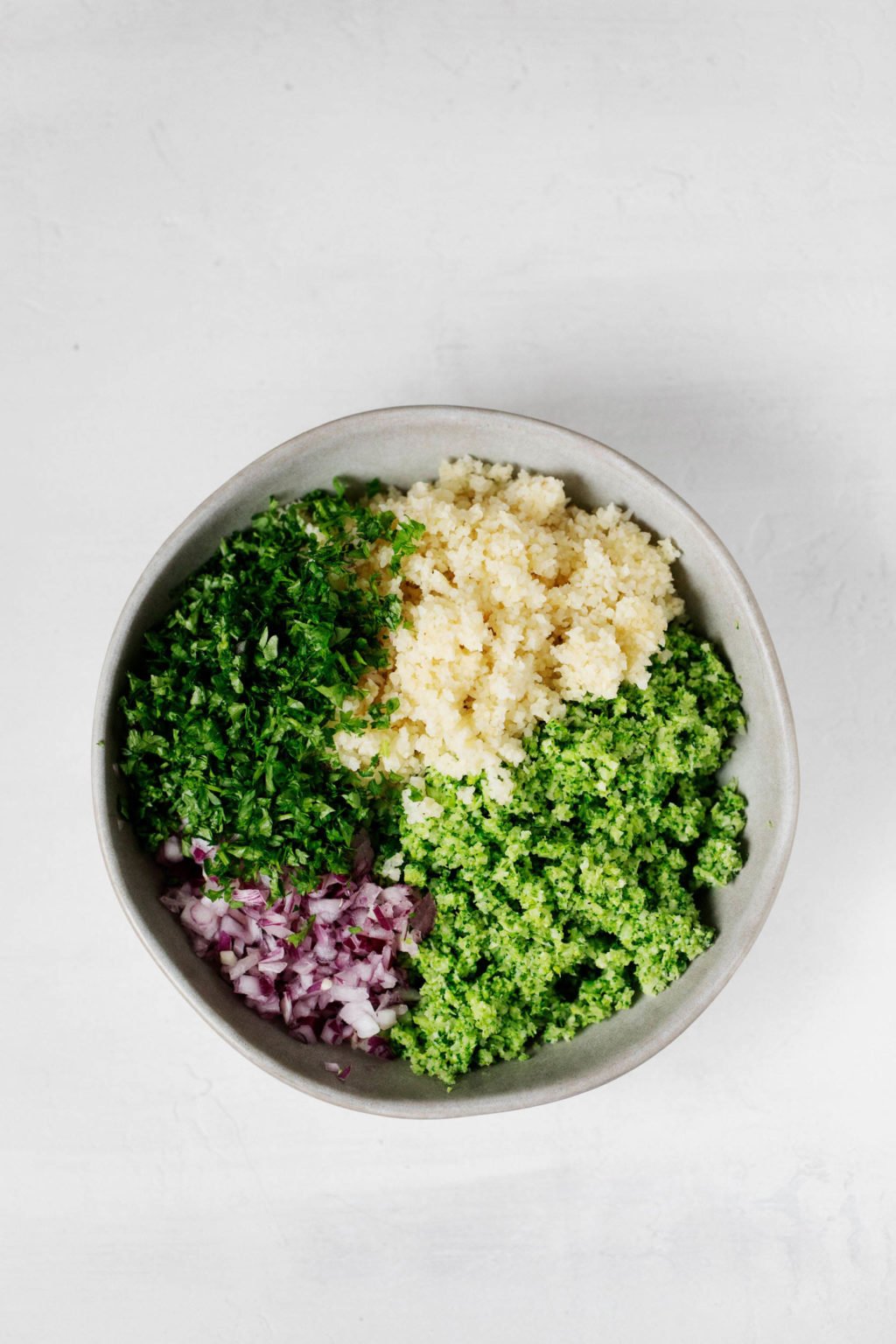
How to serve broccoli tabbouleh
There are so many ways to enjoy a versatile salad like this one. Of course it’s a great side dish, especially for a Mediterranean inspired meal. I’d happily serve it with my baked balsamic tofu or lemon pepper baked tempeh cubes. Maybe with some pita wedges on the side.
If you want to go crazy for crucifers within a meal, you could serve the tabbouleh with my whole roasted lemon tahini cauliflower.
The broccoli tabbouleh is also a nice, fresh accompaniment to soup. I like it with my tomato soup, simple green soup, carrot ginger turmeric soup, and roasted garlic chickpea soup.
Finally, you could easily transform the tabbouleh into the base for a vegan lunch bowl (or dinner bowl). Add a scoop of cooked legumes (chickpeas would be great), some pita wedges, some roasted vegetables, some herbed tofu feta, and anything else you’re in the mood for.
Top the bowl with a generous drizzle of turmeric tahini or green tahini dressing, and yum!
Preparation & storage
The broccoli tabbouleh leftovers keep nicely in the fridge for up to three days. This is a nice little grain salad to make ahead of time for packed lunches, a gathering of some sort, or just to get ahead on dinner.
More simple grain salads & sides
Grains are pretty much the foundation of my diet year round. But the winter months give me a special opportunity to appreciate how grounding and nourishing they are. Here are a few of my other favorite vegan grain salads and simple sides—some of which feature bulgur, too.
- Lemony bulgur chickpea salad
- Farro salad with beets and carrots
- Quinoa citrus salad with tofu
- Millet and roasted carrot pilaf
- Pesto farro baby kale salad
- Black bean quinoa salad with cumin dressing
- Sweet potato bulgur citrus salad
- Millet pesto salad
- Eggplant quinoa
- Quinoa bean salad with tahini and pumpkin seeds
- Baked bulgur and chickpeas
- Simple, savory mushroom farro
- Tomato quinoa & chickpeas
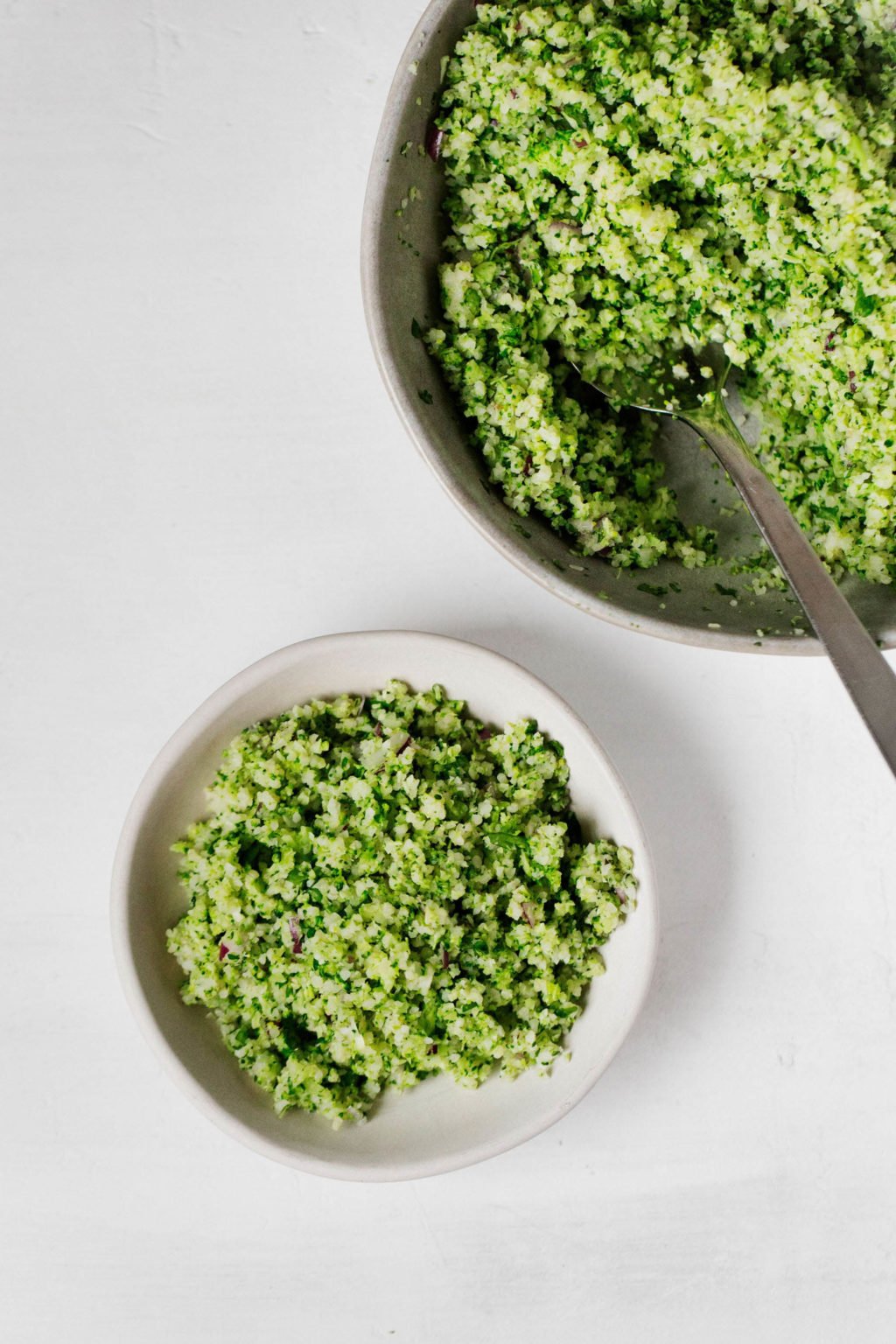
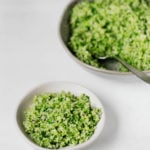
Broccoli Tabbouleh
Author –Ingredients
- 1/2 cup bulgur wheat (90 g)
- 1 large crown broccoli, thick stem removed (about 12 oz/340 g)
- 1 1/2 cups parsley, packed (curly or flat leaf)
- 1/2 cup fresh mint leaves, packed (substitute additional parsley)
- 1 small (or 1/2 large) red or white onion, finely chopped
- 3 tablespoons olive oil
- 2 tablespoons freshly squeezed lemon juice
- 1/2 teaspoon fine salt
- 1 clove garlic, minced (more to taste)
- Pomegranate arils (optional, for serving)
Instructions
- Place the bulgur wheat and 1 cup water in a small pot. Bring the mixture to a boil. Reduce the heat to low, cover, and simmer the bulgur for 12 minutes, or until the water has been absorbed. Remove the pot from heat, fluff the bulgur with a fork, re-cover, and set the bulgur aside.
- Cut the broccoli into florets and pieces. Place them into a food processor fitted with the S blade. Pulse until the broccoli is in small (about pea-sized) pieces. Alternatively, you can finely chop the broccoli by hand.
- Heat a skillet or deep frying pan over medium heat. Add a few tablespoons of water to the hot skillet. Add the finely chopped broccoli and cover the skillet or pan. Allow the broccoli to steam cook for about a minute, then remove the cover and continue cooking, stirring the whole time, for another 1-2 minutes. The broccoli should turn bright green and no longer taste raw, but it should retain a lot of its crunch. Remove the skillet with the broccoli from heat.
- Wipe down the food processor and then add the parsley and mint. Pulse the herbs until they're finely chopped.
- Place the cooked bulgur, broccoli, herbs, and finely chopped onion into a mixing bowl. Add the olive oil, lemon, salt, and garlic. Mix everything well. Taste and add additional salt as desired. If you like, top the tabbouleh with pomegranate arils. Serve.
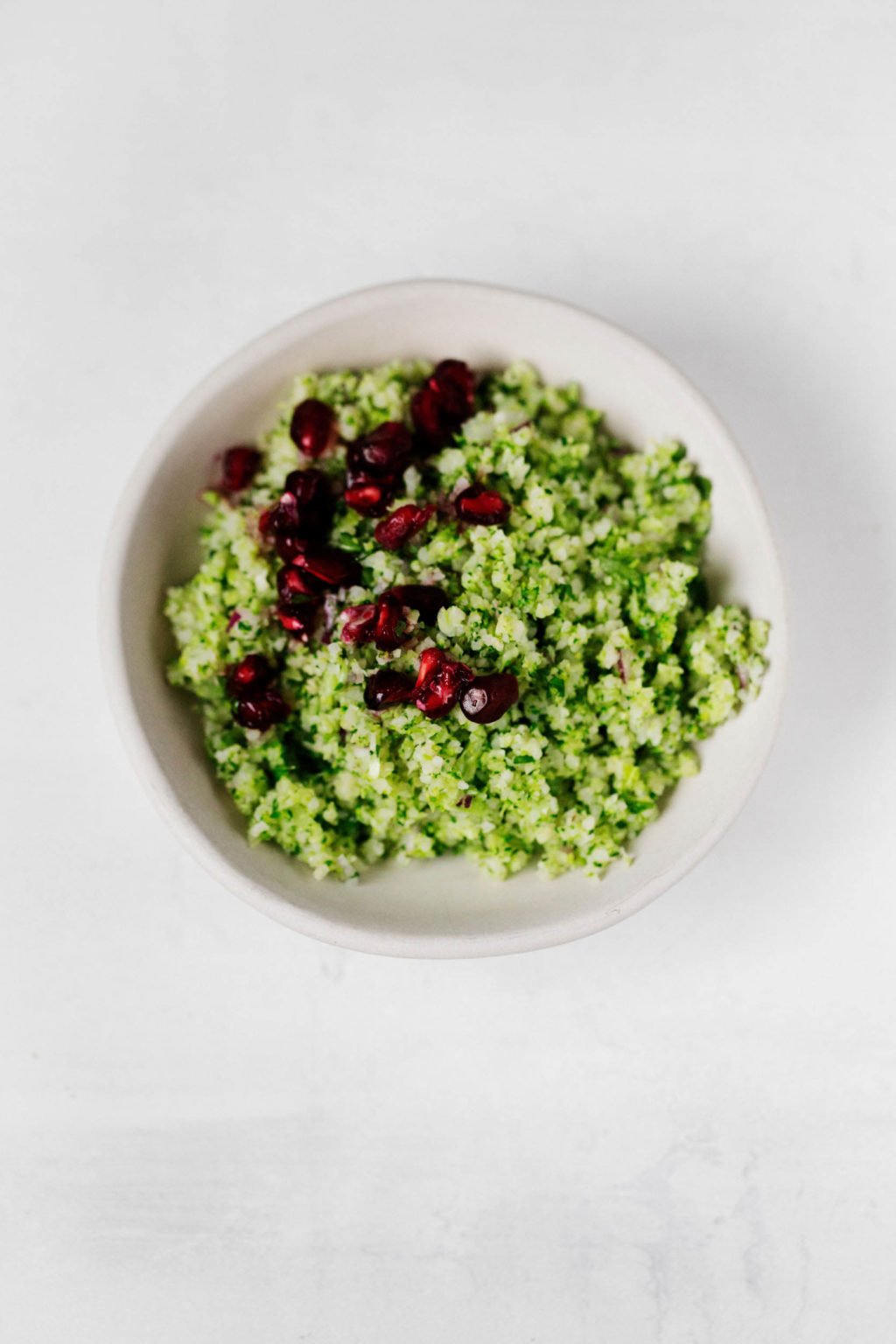
As we move into this second weekend of December, I’m grateful for simple food, nourishing ingredients, and the cheery sight of bright green and scarlet red in my salad bowl. Hope you’ll enjoy this humble broccoli tabbouleh, too—happy Friday, all.
xo
This post may contain affiliate links. If you use these links to buy something I may earn a commission. Visit my privacy policy to learn more.
Method: Stovetop
Ingredients: Broccoli
Dietary Preferences: Soy Free, Tree Nut Free, Vegan
Recipe Features: 30 Minute or Less, Meal Prep, Quick & Easy


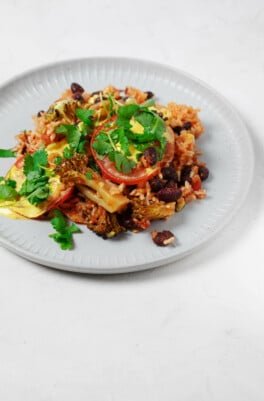
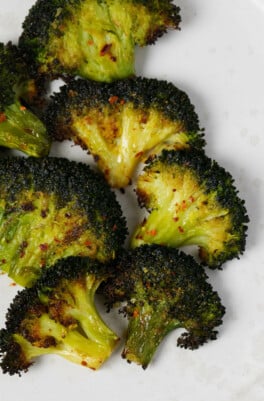
Leave a Comment